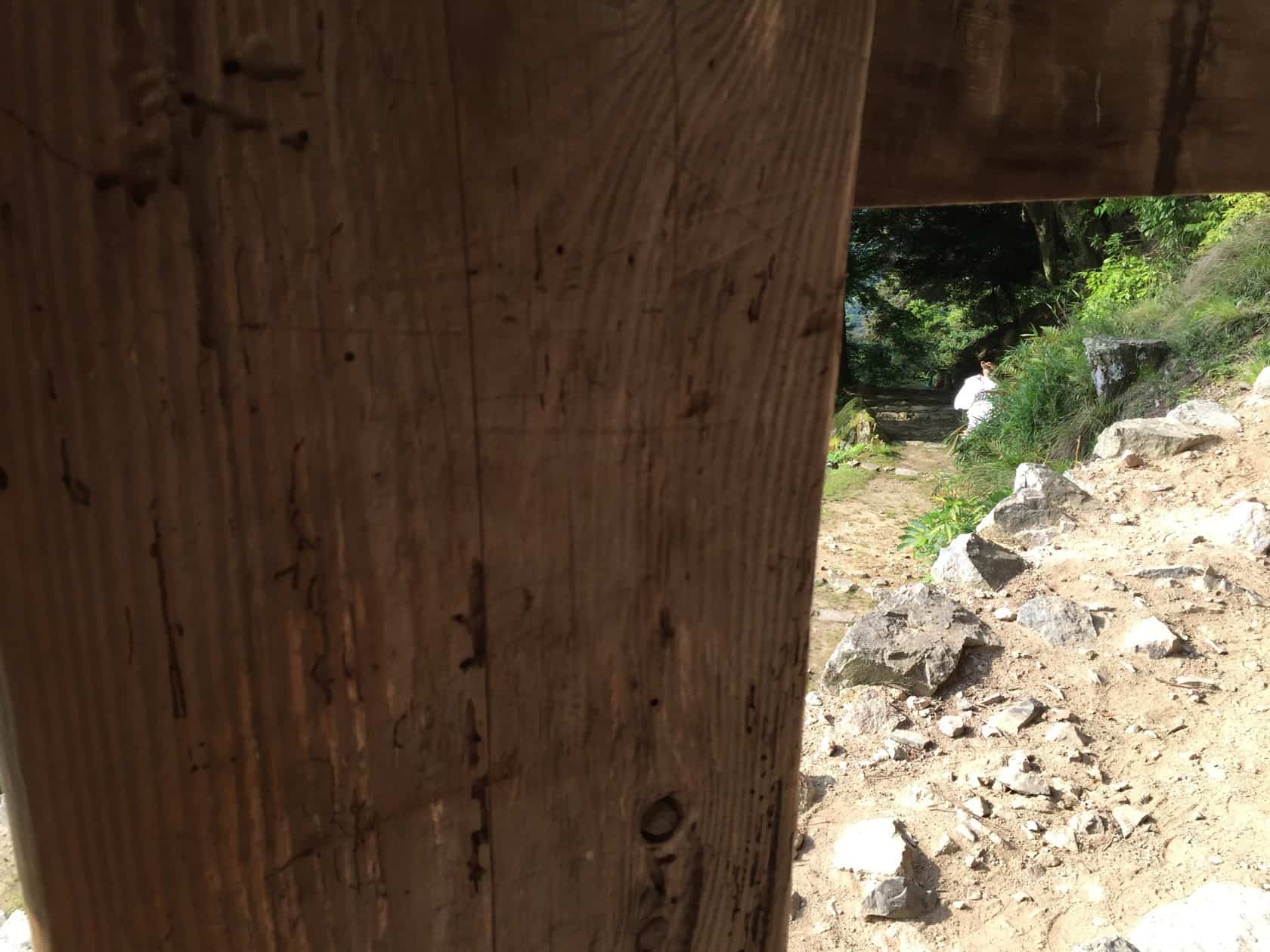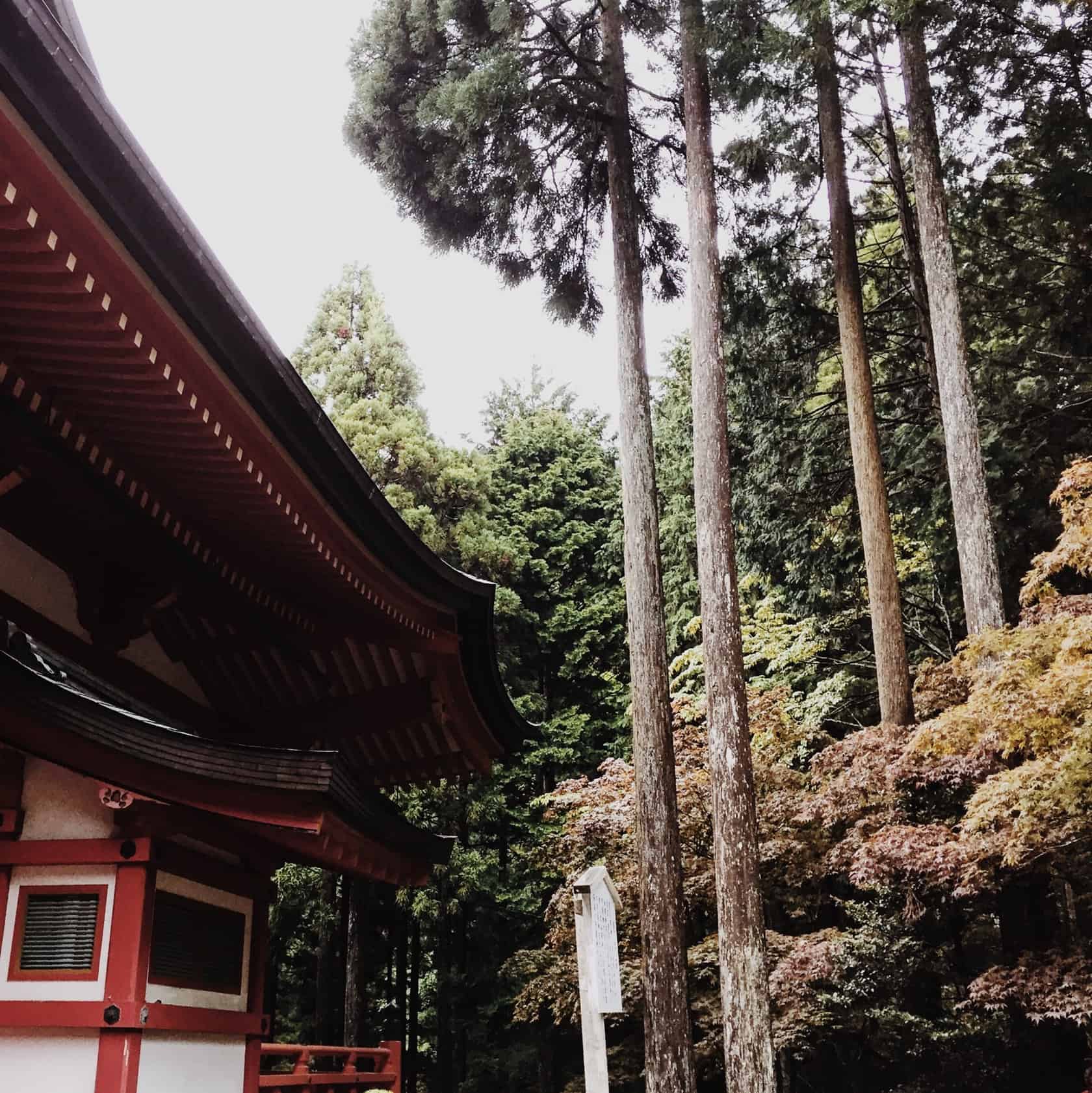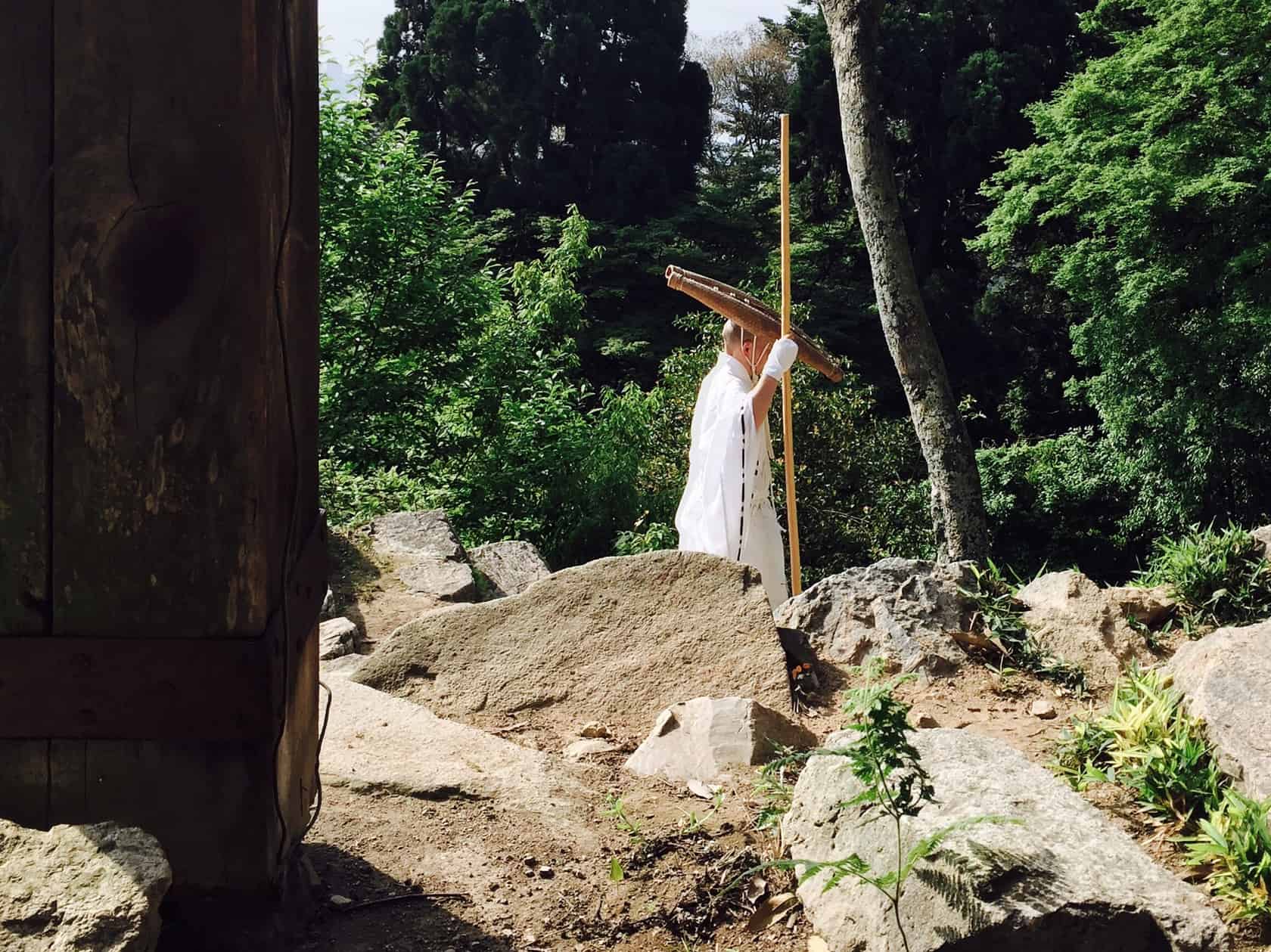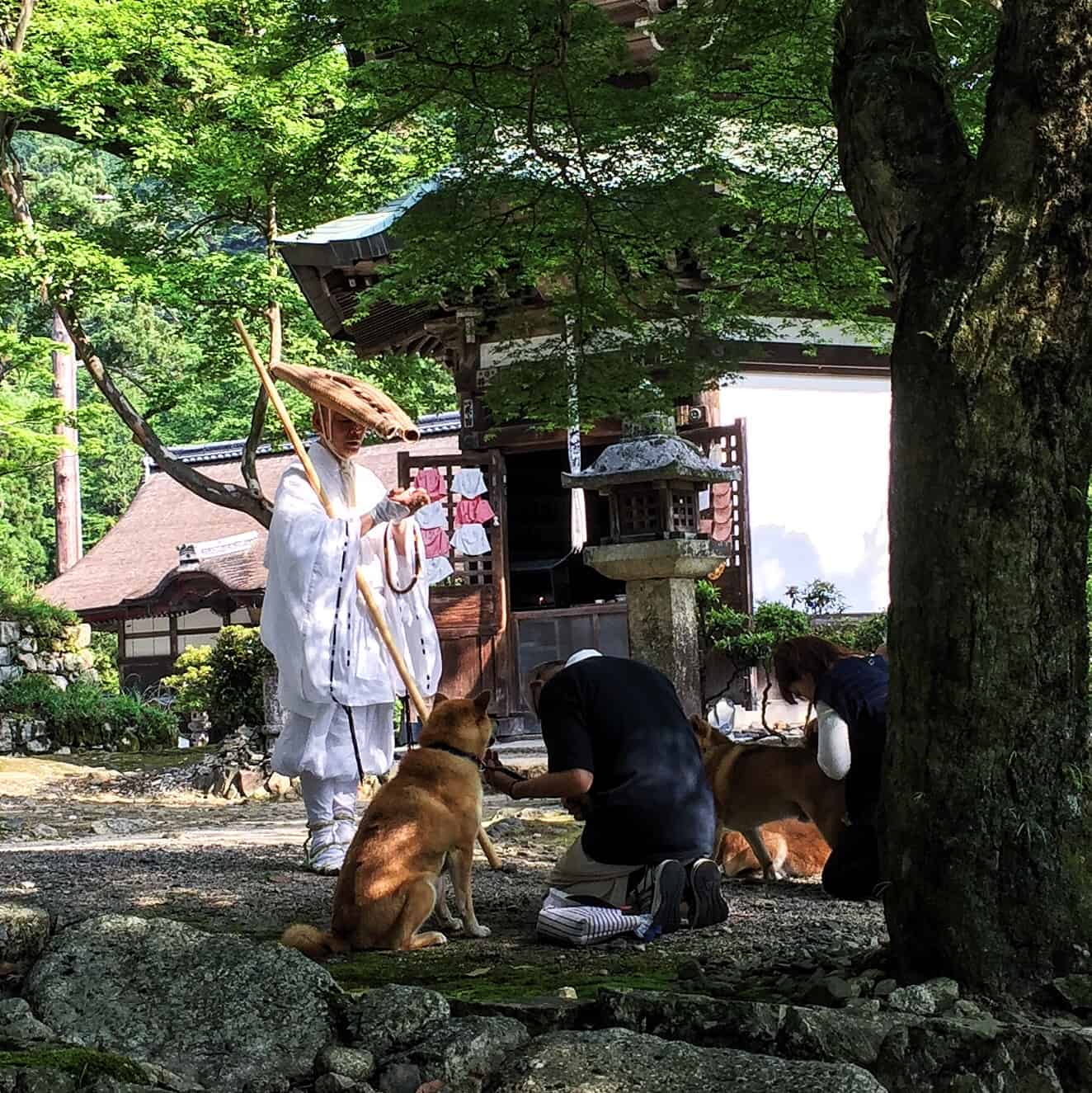“You may film the Aspirant, but you cannot speak with him.” – the final instruction from the Ajari (senior monk).
As thrilled as we were to receive this permission after 7 months of discussions, it did present a set of challenges. The Aspirant of the Sennichi Kaihogyo sect travels briskly by foot through dense forest. Moreover, much of his trek this year (2016) would be in the middle of the night – which doesn’t exactly offer the best light for filming. And, how interesting could it be to see a subject pass in front of a camera over and over without getting to know his motivations and inner experiences?
This subject, however, is one-of-a-kind. How, then, could we miss this opportunity?
The Aspirant was entering his penultimate year of the 7-year, thousand-day challenge having already completed 7 cycles of 100 days. Previous cycles required him to trek 18 miles or so per day and undergo one 9-day fast with no food, water or sleep. It would seem as though the worst was behind him. As a member of a spiritual group renowned for its high level of austerity, though, that was not to be case.
This year the Aspirant would enter a different phase of discipline. Previous courses confined his presence to the haunting, isolated environs of Mt. Hiei. This year, to symbolize the service aspect of the Buddha, the Aspirant’s route would take him off the mountain and into the city of Kyoto. This detour would increase his daily distance to 35 miles – that’s 3,500 miles over 100 days – a gargantuan physical feat.
Yet, the physicality is undaunting. The Aspirant is so focused on inner progress that the trek is simply a means to an end.
He wakes at midnight and by 12:45, lantern in hand, begins traversing the steep, single-track trails on the Mountain. By 3 am, he begins his descent into Kyoto, ascending the Mountain again by 6 am. He then continues for the final 15 miles in daylight, finishing by 10 or 11 am. Along the way he takes little to no aid, preferring simply to finish the circuit as quickly as he can in order to return home for rest and recovery.

In a way, we realized, the Ajari had made us focus on the inner story of the trek rather than the outer one. For someone as insistent as he that we not feature the extreme physical nature of the trek, but rather the inner journey – this was a brilliant restriction, or, better yet – a brilliant direction given by the Ajari.

We followed the Aspirant as though he were an exotic animal. We could approach, but only so closely. And, of course, we couldn’t communicate with him. In the mist, in the rain, at the crack of dawn, in the darkness of midnight, we would hear the Aspirant’s approach as a murmur, then as an increasing chant as he came closer. He would pass us without even as much as a sideways glance and continue along the footpath.
We leapfrogged him in jeeps passing temples that, on an ordinary day, would take our breath away. Our only goal, however, was to gain sufficient distance from the Aspirant and set up our next series of shots.

After 2 days, our crew was exhausted, yet supremely satisfied at the arc we captured. Our relationship with this great monk, however, was merely observational. So at the end of the last scene, I gathered our entire crew on the side of the course where we waited equipment-free. We were on our knees with folded hands, technically waiting for the Aspirants blessings, but, more aptly, waiting to offer him our gratitude.

As the Ajari had worried, any mishap from the crew could cause the Aspirant an injury and perhaps one that would hamper his daily requirement. We could, in effect, be the cause of the Aspirant’s death by suicide. It was a heavy responsibility and we didn’t bear this lightly. We knew as well that the Aspirant welcomed our presence, albeit worldlessly. We were partners with him for 2 brief days – tasked with communicating the beauty and grandeur of his silent trek to scores of seekers both now and in the future.
As he saw us on the side of the road, penitent and poised, the Aspirant stopped, placing his hands and beads on the crowns of our heads, one-by-one, and repeating a holy mantra. After he blessed each of us he stopped and in an uncharacteristic turn said in Japanese, 皆さん、どうもどうもどうも有難うございました。“Thank you all very very very much.” And with a sly smile and a quick bow, he turned and disappeared into the wilderness.
